-
 Bitcoin
Bitcoin $118600
-1.16% -
 Ethereum
Ethereum $3616
-2.94% -
 XRP
XRP $3.174
-10.23% -
 Tether USDt
Tether USDt $1.000
0.01% -
 BNB
BNB $773.4
-0.42% -
 Solana
Solana $189.3
-6.58% -
 USDC
USDC $1.000
0.02% -
 Dogecoin
Dogecoin $0.2406
-10.24% -
 TRON
TRON $0.3098
-1.24% -
 Cardano
Cardano $0.8139
-9.10% -
 Hyperliquid
Hyperliquid $44.01
-2.71% -
 Stellar
Stellar $0.4266
-9.64% -
 Sui
Sui $3.699
-7.29% -
 Chainlink
Chainlink $18.21
-6.60% -
 Hedera
Hedera $0.2465
-9.46% -
 Bitcoin Cash
Bitcoin Cash $512.3
-2.27% -
 Avalanche
Avalanche $24.03
-5.62% -
 Litecoin
Litecoin $112.2
-5.21% -
 UNUS SED LEO
UNUS SED LEO $8.964
-0.26% -
 Shiba Inu
Shiba Inu $0.00001386
-9.81% -
 Toncoin
Toncoin $3.188
-4.76% -
 Ethena USDe
Ethena USDe $1.001
-0.02% -
 Polkadot
Polkadot $4.135
-7.84% -
 Uniswap
Uniswap $10.16
-5.19% -
 Monero
Monero $310.5
-2.84% -
 Bitget Token
Bitget Token $4.702
-2.53% -
 Dai
Dai $0.0000
0.01% -
 Pepe
Pepe $0.00001270
-9.07% -
 Aave
Aave $290.7
-5.84% -
 Bittensor
Bittensor $424.7
-5.28%
Is it effective to stand firm for three consecutive days after breaking through the previous high?
A breakout above resistance can signal bullish momentum, but holding for three days isn't guaranteed profit—analyze volume, use technical indicators, and manage risk effectively.
Jun 29, 2025 at 07:07 am
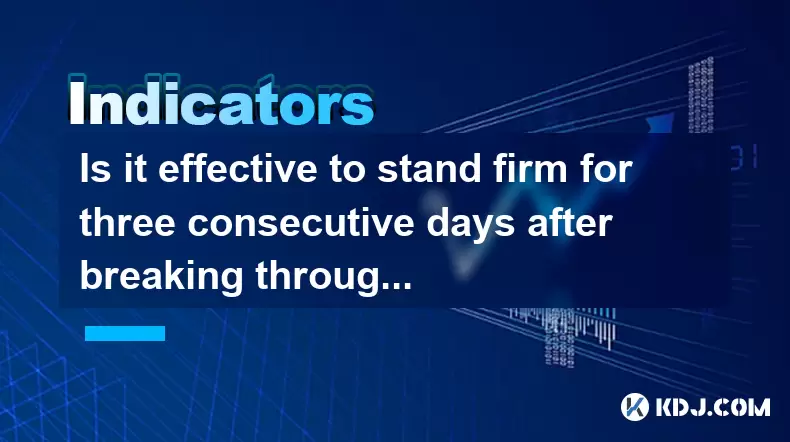
Understanding Breakouts in Cryptocurrency Trading
In the volatile world of cryptocurrency trading, breakouts are among the most anticipated price actions. A breakout occurs when the price moves above a significant resistance level or below a key support level. In this context, breaking through the previous high is considered a bullish signal that can potentially lead to sustained upward momentum. However, many traders wonder whether simply holding their position for three consecutive days after such a breakout will yield profitable results.
The effectiveness of this strategy depends on several factors including market sentiment, volume during the breakout, and the broader macroeconomic environment affecting crypto assets like Bitcoin (BTC), Ethereum (ETH), and altcoins.
Important Note: While holding for three days may seem like a simple strategy, it's crucial to understand how breakouts behave before applying any rule blindly.
Analyzing Historical Price Patterns Post-Breakout
Historical data shows that not all breakouts lead to continued momentum. Some result in false breakouts, where the price briefly surpasses a prior high only to fall back below shortly afterward. This often traps traders who entered long positions expecting a continuation move.
To evaluate the effectiveness of holding for three days after a breakout:
- Look at past candlestick patterns following similar breakouts
- Analyze volume spikes accompanying the breakout
- Check for any news events or whale movements that might influence short-term behavior
Key Insight: If historical patterns show consistent pullbacks or reversals within 24–72 hours after a breakout, then holding for three days may not be effective without additional confirmation tools.
How Volume Influences Breakout Reliability
Volume plays a critical role in confirming the strength of a breakout. A breakout accompanied by high trading volume suggests strong buyer interest and increases the likelihood that the new high will hold as support. Conversely, a breakout with low volume may indicate weak conviction and a higher probability of failure.
Steps to analyze volume post-breakout:
- Compare the volume of the breakout candle to the average volume over the last 10–20 candles
- Watch for increasing volume in the next 1–3 days following the breakout
- Use volume indicators like On-Balance Volume (OBV) or Chaikin Money Flow (CMF) to gauge institutional or smart money participation
Crucial Detail: Without a surge in volume, even a successful-looking breakout can quickly reverse, making the three-day hold strategy risky.
Incorporating Technical Indicators for Confirmation
Relying solely on time-based rules like "holding for three days" can be dangerous without incorporating technical analysis tools for confirmation. Traders should consider using moving averages, RSI, and Fibonacci levels to validate the strength and sustainability of a breakout.
Recommended steps:
- Confirm that the breakout occurs above a key moving average (e.g., 50-period EMA)
- Monitor RSI to ensure it doesn’t enter overbought territory immediately after the breakout
- Use Fibonacci extensions to project potential price targets and set dynamic stop-loss levels
Essential Tip: Combining multiple technical signals significantly improves the reliability of the breakout and reduces false positives.
Practical Risk Management When Holding Post-Breakout
Even if a breakout appears valid, managing risk becomes essential when holding for three days. Setting appropriate stop-loss levels and profit targets can help protect capital while allowing room for price fluctuations.
Effective risk management steps include:
- Place a stop-loss just below the breakout level or the recent swing low
- Set a conservative take-profit target based on historical volatility or Fibonacci projections
- Consider trailing stops if the price continues to rise beyond initial expectations
Critical Strategy: Never assume that a breakout guarantees further gains—always have an exit plan before entering a trade.
Frequently Asked Questions
Q: Does holding for exactly three days always work after a breakout?
A: No, the effectiveness varies depending on the asset, timeframe, and market conditions. Some breakouts fail within hours, while others continue for weeks.
Q: What timeframes are best suited for analyzing breakouts?
A: Higher timeframes like 4-hour or daily charts tend to offer more reliable breakout signals compared to lower ones like 5-minute or 15-minute charts.
Q: Can I automate the three-day hold strategy using bots or scripts?
A: Yes, but automation requires robust backtesting and must include filters like volume and trend confirmation to avoid repeated losses from false breakouts.
Q: Should I always wait for three days, or can I exit earlier if the price hits a resistance zone?
A: Exiting early based on price action or indicator signals is often more effective than rigidly sticking to a fixed timeline.
Disclaimer:info@kdj.com
The information provided is not trading advice. kdj.com does not assume any responsibility for any investments made based on the information provided in this article. Cryptocurrencies are highly volatile and it is highly recommended that you invest with caution after thorough research!
If you believe that the content used on this website infringes your copyright, please contact us immediately (info@kdj.com) and we will delete it promptly.
- Score Big This Season with the BetMGM Bonus Code: Your Ticket to MLB Bonus Bets!
- 2025-07-24 06:50:12
- Bitcoin: From Digital Gold Rush to Evolving Asset Class
- 2025-07-24 06:50:12
- Shiba Inu's $1 Dream: Major Hurdles and Community-Driven Hope
- 2025-07-24 06:30:13
- Ethereum, Altcoins, and BlockDAG: Navigating the Crypto Landscape
- 2025-07-24 06:30:13
- Dogecoin's Resistance Retest: Parabolic Move on the Horizon?
- 2025-07-24 04:50:13
- WLFI, Vaulta Token, and Holdings: Navigating the Web3 Revolution
- 2025-07-24 05:30:13
Related knowledge
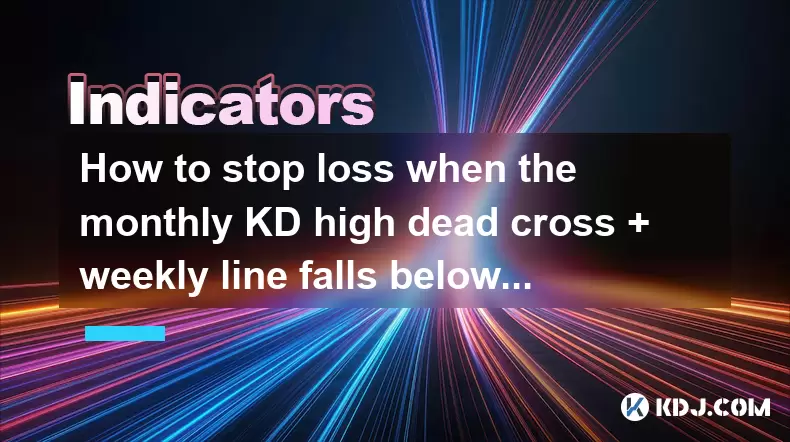
How to stop loss when the monthly KD high dead cross + weekly line falls below the 20-week line + daily line pulls back on the 5-day line?
Jul 24,2025 at 07:00am
Understanding the Indicators: KD, Weekly, and Daily Moving AveragesWhen traders analyze cryptocurrency price movements, they often rely on technical i...
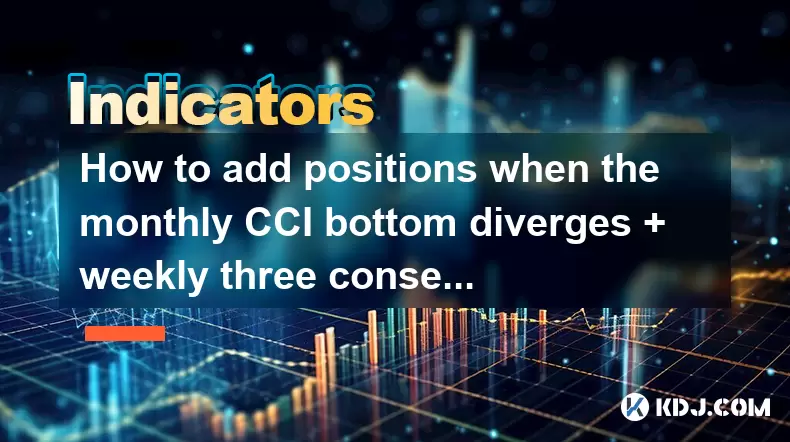
How to add positions when the monthly CCI bottom diverges + weekly three consecutive Yang + daily line gap is not filled?
Jul 24,2025 at 05:22am
Understanding the Monthly CCI Bottom DivergenceWhen analyzing the monthly CCI bottom divergence, traders are identifying a potential reversal signal i...
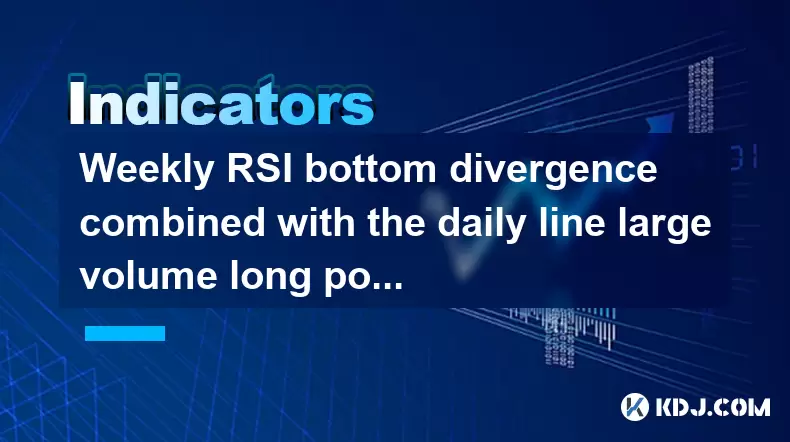
Weekly RSI bottom divergence combined with the daily line large volume long positive start signal
Jul 24,2025 at 05:28am
Understanding RSI Bottom Divergence in Cryptocurrency TradingIn the context of cryptocurrency trading, RSI bottom divergence is a powerful technical s...
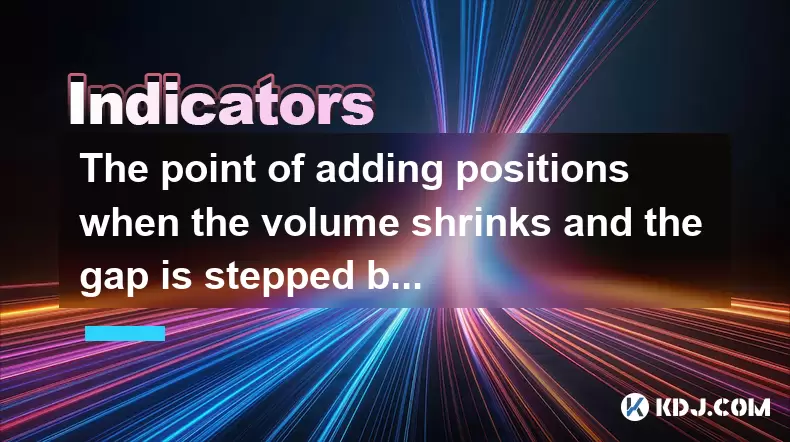
The point of adding positions when the volume shrinks and the gap is stepped back after the gap is jumped
Jul 24,2025 at 04:56am
Understanding the Gap Jump Phenomenon in Cryptocurrency TradingIn cryptocurrency trading, a gap jump occurs when the price of a digital asset opens si...
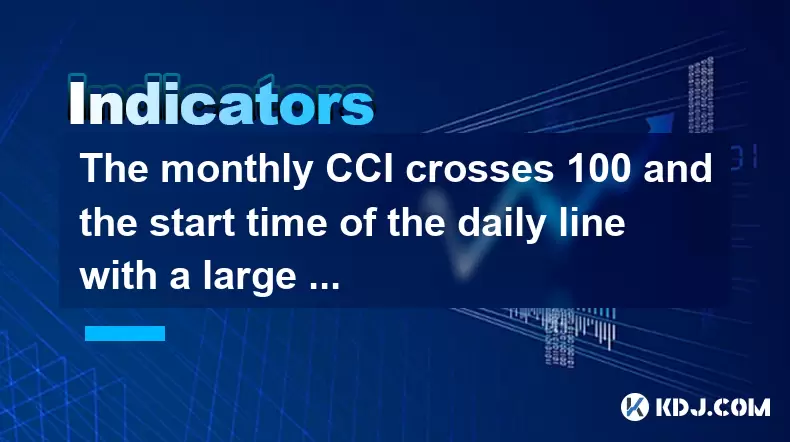
The monthly CCI crosses 100 and the start time of the daily line with a large volume positive line
Jul 24,2025 at 03:56am
Understanding the Monthly CCI Indicator and Its Significance at 100The Commodity Channel Index (CCI) is a momentum-based oscillator used to identify o...
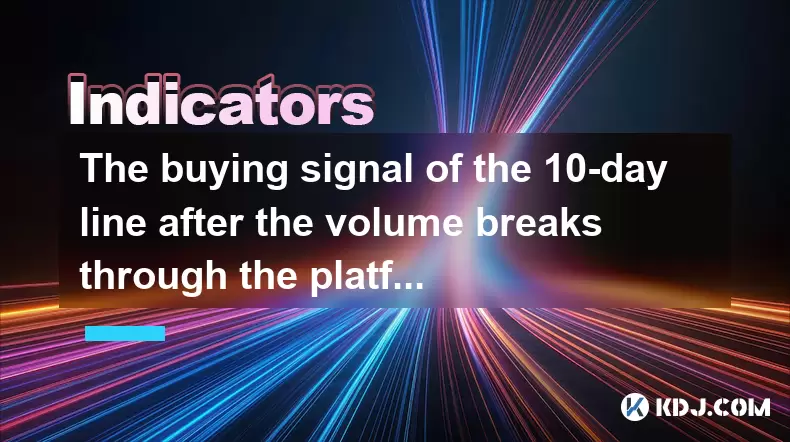
The buying signal of the 10-day line after the volume breaks through the platform
Jul 24,2025 at 06:00am
Understanding the 10-Day Moving Average in Cryptocurrency TradingIn cryptocurrency trading, moving averages are essential tools for identifying trends...

How to stop loss when the monthly KD high dead cross + weekly line falls below the 20-week line + daily line pulls back on the 5-day line?
Jul 24,2025 at 07:00am
Understanding the Indicators: KD, Weekly, and Daily Moving AveragesWhen traders analyze cryptocurrency price movements, they often rely on technical i...

How to add positions when the monthly CCI bottom diverges + weekly three consecutive Yang + daily line gap is not filled?
Jul 24,2025 at 05:22am
Understanding the Monthly CCI Bottom DivergenceWhen analyzing the monthly CCI bottom divergence, traders are identifying a potential reversal signal i...

Weekly RSI bottom divergence combined with the daily line large volume long positive start signal
Jul 24,2025 at 05:28am
Understanding RSI Bottom Divergence in Cryptocurrency TradingIn the context of cryptocurrency trading, RSI bottom divergence is a powerful technical s...

The point of adding positions when the volume shrinks and the gap is stepped back after the gap is jumped
Jul 24,2025 at 04:56am
Understanding the Gap Jump Phenomenon in Cryptocurrency TradingIn cryptocurrency trading, a gap jump occurs when the price of a digital asset opens si...

The monthly CCI crosses 100 and the start time of the daily line with a large volume positive line
Jul 24,2025 at 03:56am
Understanding the Monthly CCI Indicator and Its Significance at 100The Commodity Channel Index (CCI) is a momentum-based oscillator used to identify o...

The buying signal of the 10-day line after the volume breaks through the platform
Jul 24,2025 at 06:00am
Understanding the 10-Day Moving Average in Cryptocurrency TradingIn cryptocurrency trading, moving averages are essential tools for identifying trends...
See all articles

























































































